Over the years of dabbling in music, both as a musician and an engineer, how would you qualify your relationship with sound?
I’m afraid I find it difficult to split my personality into these halves - musician and engineer. Both co-exist within me. I don't see them as two different aspects. I think of myself simply as an artiste; as a musician, I create music, as an engineer, I sculpt sound. Honestly, an engineer or a scientist for that matter is also an artiste. Take the microphone, for example. A great deal of passion and science goes into crafting a good microphone. For me, a microphone is like an instrument.
Talking of sound, I think all sounds have music. When sound comes in a particular harmonic order that is pleasant on the ears, we call it music. When it is not - like the sound of a machine or a rattle – we call it noise. But if I were to isolate the noise, there is music in that too. The other thing is, what we consider music or noise is based on one’s own perception, right? For me, an exhaust fan emits sound in a specific rhythm; the hum from a ceiling fan sounds like base pitch to me. To someone else, it may be just noise.
But because of a sound understanding of the notion of sound itself, are you almost always making music out of sound?
I guess so. When I am in a car and I hear a bump, I immediately start to think about its corresponding frequency. If we are on a road trip and my wife feels nauseous due to the road hum on the highways, I automatically think about the frequency of the hum and why it could cause this.
A few years ago, JK Tyres wanted me to train their scientists to identify noise and rumble from the tyre by using their ears instead of instruments. You see, for JK Tyres, the sound of the tyre is actually music. So yes, I think everything in life has a sound of its own.
What is the sound of your studio? Is there a sound within that silence?
Sound and silence are polar opposites. There is no sound without silence. It is like how we wouldn't know the colour black if we didn't know the colour white.
Silence is what helps us distinguish between the two musical notes. Silence, in fact, is the greatest part of music. It contributes so much to music and to sound. Silence gives us a point of reference. In engineering, silence is what enables us to understand the ratio of the signal level to the silence.
Sound and silence are polar opposites. There is no sound without silence. It is like how we wouldn't know the colour black if we didn't know the colour white
Has the process of creating soundscapes become easier for you because you are an engineer who has a keen understanding of music? Are artistes open to your suggestions?
As a sound engineer, I have a great responsibility of bringing out the best in artistes. An artiste may pass away one day but his or her music will live eternally. Whose responsibility is it then to make sure the music recorded lives past, beyond an artiste's life and is in a way timeless? Whose duty is it to make sure the brilliant musicians I record sound the best to their audience? It is entirely mine - the responsibility of the person sitting on this chair of the sound engineer.
As a musician, I understand music and try to get the best out of the musician whose music we are recording. It is similar to shooting a film. An actor may be acting very naturally, but something else may not work, and we end up having to re-take. Musicians may end up recording for long hours and get tired. Sometimes, they may be inspired by other musicians and outdo themselves; sometimes, I have to be that inspiration to help them bring out their best.
My role is often to look at the content dispassionately and keep re-recording until I am convinced of the quality of the output. In the process, sometimes I end up straining my relationship with artistes. There are cases where people have advised me to just do my job of recording and allow them to do their job of performing. There are even cases where artistes have walked out of my studio.
Initially, back in the day, I’d be very involved with all my recordings. I’d offer suggestions, aplenty. Some artistes liked it, some didn’t. But by virtue of working together, over and over again, I have also learnt a lot about how to work around artistes. I have learnt to cut myself off from artistes who didn’t respond in the same manner.
Did that affect you?
Yes, of course. It would hurt me. But not anymore. Now, I can let go off the musician in me and simply record.
Have these experiences taught you a lot about people?
Absolutely. I’m human and I can't say I don't have any ego. But I have learnt to work around it over the years. I have learnt to understand human psychology better and I think it has helped me, personally. It has taught me to centre myself. You know life is a funny creature. I remember this artiste I worked with, many years ago, who asked me, during a recoding to simply mind my business and many years later, came back for suggestions. In a sense, we had both evolved as human beings.
As an artiste, is it easy for you to empathise with the sometimes eccentric, egoistic behavior of artistes?
Totally. Artistes inhabit a different world. When they are engaging with their art, they can't think of anything else. They are emotionally very attached to their music. When they know it is not right, they may shut off and become very dull. When they are stuck somewhere, it helps I am around because sometimes I can identify it much better than they can. What I need from them is a sense of trust. If they trust me, it is often very smooth. But if they let their egos come in between, things become strained. But like I said, I’ve learnt to work around that too.
The thing is, you can understand an artiste only if you are one.
Does this ego stem from a personal aspiration for perfection?
Trying to achieve perfection is a problem, especially in India. We are always fighting for resources and time. My investments in the studio are in Euros and US dollars. My income is in Indian rupees. It is very difficult to manage.
The more time I spend in the studio, the more it gets expensive for me. But the passion for perfection means that I end up working more and more on a project. Sometimes I do not have even ten days for a production which is by no means sufficient for it. But I keep working in the pursuit of perfection. Even after the first premiere, I keep sending my clients fresh masters. Even after two years, if I re-visit and think that something can be done better, I update the master and send it to them. This has become natural for me. I feel good at the end of the day and sleep peacefully.
Running a good studio is definitely not remunerative. I may have the name. I may be busy all through the year. But the income I get out of this goes into buying the basic equipment I need to do my work.
Listen to Sai Shravanam as a Music Composer/Producer/Arranger
Have you ever considered moving to the West and setting up shop there?
You know, I wish sound engineering gets recognized in India as a field that one can pursue. Many people don’t even know it exists. Sound engineers sustain musicians. But we do not have any awards for sound engineering. Only my love for my work keeps me going. In fact, if I get attention, artistes in India may not even like it. Here it is always the centre stage that matters. Who has sung the album is more important than who is the sound engineer. What is very good about the West is that they have Oscars even for the make-up artistes. The lady with a brush and Tom Hanks actually hold hands. The Roadies get the same silhouette as Mariah Carey at the Grammys. So, there is a lot of motivation for people to take up such work.
Also, there is a huge difference in the remuneration the singer and the accompanists get in a classical music concert. Sometimes, one just feels like moving to the West.
But, why am I still here? I have contributed a lot to the sound getting better in Indian music productions, especially the classical. I feel I have a sense of responsibility to do that in India rather than being commercially successful in the West. Also, nowadays you can work from everywhere. The world has become so small. Projects can come from anywhere.
Talk to us about the way you respond to music… Are you always breaking it down, distilling it as an engineer or experiencing it like a musician?
I am still evolving. When things are right and with the right balance, I would typically not want to think of analyzing things and breaking it down.
If I look at myself as a listener, I am almost always processing what I listen. At times, it becomes a problem. For example, I can't listen to a concert freely. But there are instances where I stop analyzing things and just enjoy the music. Most of the old records do not disturb me because not much science is used there. Also, I listen to good symphony as a whole since it has a good natural balance.
Every time I listen to Ustad Rashid Khan, I am blown away by his voice and the way he hums. I am taken far away from the technicalities. Ustad Zakir Hussain and A R Rahman are my greatest inspirations. I get inspired by the sounds Ustad Zakir Hussain produces from his tabla. I see Rahman as a visionary. I think he is probably the only person in India who values all kinds of sounds, even the tiniest and the minutest of them. In many of his songs, there is this completeness between the melody and the sound execution. There is no division. You need so much maturity to reach that pinnacle.
When I listen to Hans Zimmer, I listen to both the sound and the music. He designs sound. I am amazed at how he goes about doing that. I am always analyzing what he would have done to design that kind of a sound.
Organic music leaves me organic. Hans Zimmer leaves blows me about the technique of things.
When sound is engineered, there is technology and its intervention? Would you think that technology also in a sense takes away the very organic nature of music?
Technology can sometimes take away the organic nature of music. It is up to me to decide how much I intervene. I leave some things the way they are and correct some other things because I am responsible for it overall.
For a neighbour, the loom sound may be so annoying and disturbing. My ears perceive it as sound and music. You can find rhythm in every aspect of life and this creation
I have to be very sensitive here. Sometimes I can't just look at perfection alone. For example, an artiste might have made a small mistake with the lyrics or with the pitching but the music overall would have come out so beautifully. It is best then to leave it as it is and not try to change anything. With artistes, an idea that comes once or the way it gets executed once may not happen again.
Thus, imperfection sometimes is very beautiful and you just leave it like that.
Music can be engineered to sound great; can a musician also be engineered to sound good? If so, would that mean there is scope for even musicians who don’t necessarily make the cut as musicians but whose voices sound good?
In classical music, you cannot make anything mediocre to appear great. It is impossible to bring mediocre people into the studio, get them into pitch and bring them out as great artistes. No one can do it. In film music, we have software that can align the pitch for artistes. But they can't sustain in the long run. Technology cannot play a role beyond a point. It is a myth that you can make a non-singer sing. An average singer can be made to sound good. But a below average singer cannot be made to.
Let us take the example of actor Kamal Hassan. He may not be a professional singer. But he has music in him. He can sing. He can tell jatis (rhythmic compositions).
Technology can be an aid. But if you don't have music in you, you cannot do anything. One thing all artistes must understand is that the music is not theirs. We don't choose music. Music chooses us.
What is the difference between the processes of designing music and designing sound? Are they similar in nature?
Though they are intertwined, there is a marked difference between the two.
Designing music involves music and not merely sound. It is about designing the musical elements that are available. For example, in a production called Nadhi that I worked on for dancer Leela Samson, and where Rajkumar Bharathi was the music composer, I needed a bed of chords to be created only with Indian classical music instruments. Let's say I have a veena. How do I get a particular chord out of the veena? I went the non-traditional route, used unconventional fingering patterns and strummed the strings to get a bed of sound. Then I envisioned playing the chord in a different manner to get a layer of a different colour. Bhavani Prasad, the veena player executed this. Then I combined the two together and worked on other musical elements like where to give a sustain, how to fill gaps and what do I fill the gaps with. I used instruments like the swarmandal and the human voice. The composer has a certain vision but somebody has to design the music and bring out the emotion.
Now with regard to designing sound, if I come across a passage that a female singer has sung, for instance, one can observe that the singer's voice sounds a certain way in its natural state. I need to understand what is best in her voice. For this particular production, I needed the voice to sound angelic. So, I have to sculpt her voice. I have to figure out which portion of her voice is husky, which is the nasal portion etc and work on different components of her voice with the necessary delays, reverbs and other effects to create the desired output. I superimpose effects like making her sing in an empty hall. Thus, I sculpt the voice to sit on the bed of music that I have created earlier. This is sound engineering. When it comes with creativity, it becomes sound design. It involves being creative with sound and using the right tools, hardware, plugins etc.
Let us take the example of a nadaswaram. It is an instrument meant to be played in temples with stone walls and huge spaces that are required for the sound to evolve. Studio is probably the worst place it can be played. Then how do you record nadaswaram in a studio? This is where technology helps. What microphones do I use? I need good microphones that can take high sound pressure levels. What walls do I use - wooden, stone, marble? I need to compensate on the frequencies that do not occur in a studio. What room is the best for nadaswaram? I can even make him play in a cave. But I need to make it sound like it does in its natural settings. The raw recording could be screechy. I need to compensate the mid-range. This is the amalgamation of music design and sound design.
A mix of all of this is what gives you the final output.
What is the co-relation between noise and music? Is there a connection between the two at all?
This is exactly what I did in an exclusive piece I composed for Malavika Sarukkai's production Thari - The Loom which is going to be premiered soon. The production is about the costume sari becoming a metaphor for life itself. It explores the interplay of the constant and the variable, the eternal and the changing - the warp and the weft. While discussing with Malavika Akka, we discussed the loom sound and what we could do about it. I said I will record the sound of a loom and see what I can make out of it. She was very encouraging.
I went to Kanchipuram to record looms in action on the site. I had to carry very specialized microphones, pre-amps and other equipment to the location. Setting things up there was not easy as the large loom would have sounds coming from different places - from the pedal, the danglers, the wooden parts, the moving shuttle, the nuts and screws and even from the thud of the feet of the weavers. I had to do the recording arrangement in a way so that I could capture all of that.
But all that I was actually capturing is what one would consider noise. In the end, I had about 2.5 hours of noise with me. Out of say 3000 odd samples I recorded, about 2000 would have other noise as well like the workers coughing and sneezing, the honking of vehicles on the road nearby and the sounds from neighbours’ television sets.
It was very scary at first to even think of creating music from this. It was so abstract. I wanted to maintain the loom sound organically and fit the melody and rhythm around that. Each loom had its own sound. Silk loom has a lot of danglers with metallic sound. Cotton loom has more of wooden sounds. I had to capture and maintain the sounds accurately. Since the production was being done in 2017, I wanted to maintain the contemporary sounds that are part of today's loom like the noise of bus horns and birds. I didn't want to recreate a silent loom of the 1800s. It took me five days of just reviewing the content and three days of editing to get somewhere, with each day comprising 10 to 12 working hours.
I designed music around the loom sounds. I started with the basic raw sound of the loom, had a tanpura slowly filling in, added basic mridangam syllables, tha dhi thom nam, employed a basic alaripu (a dance composition) and then gradually built up phrases corresponding to the loom sounds as it picked up speed. The gait of the loom also changed in-between. So, I had to employ different nadais (rhythmic gait) to match those. There were some sounds that were off beat and I maintained that as well.
How do I decide what to maintain as organic? It is here that my role as a musician and sound designer comes into play. I left the loom sounds organic. The music design comes into play when I have to decide where I should employ konnakol (art of performing percussive syllables vocally), where I should use the mridangam, where I should use the loom sounds and where I should use all of them together.
I steered the whole project from raw location sound to the final master.
This is a piece which I feel will stand the test of time. It is something that is very difficult to execute - to create music from noise and sounds of everyday life.
For a neighbour, the loom sound may be so annoying and disturbing. He may even get headaches listening to it. My ears perceive it as sound and music. You can find rhythm in every aspect of life and this creation.
Since your work is so much about listening, tell us something about the art of listening. Have you become better at it over the years?
Listening just comes naturally to me. As I listen to you telling me a story, there is almost a parallel sound story I am creating in my mind. For example, when dancer Sheejith Krishna was telling me about Don Quixote and how I have to create eerie sounds, my mind was working in parallel on how those eerie sounds will take shape. If Shekhar Dattatri needed sounds of foliage and flapping of bird wings for his movies, as I am listening to him say that, I’d be thinking of some paper strips that are flapping from which I cut out frequencies that are not paper to get the desired sounds. Thus, I create as I listen.
Listen to Sai Shravanam as a Music Designer for the production, Don Quixote, by Sheejith Krishna
Does every soundscape you create have a standalone story of its own? So are you also not, in a way, a storyteller who uses the medium of sound to tell a story?
Yes. It is a matter of interpretation. The same thing can be envisioned by different people as completely different stories. Each one of us can write different stories for the first ten seconds of a soundscape. That is art. Creativity is infinite and endless.
What about the sound of silence? What is its role in your life?
I think silence is my life. Without that there is no sound and there is no music. I am exposed to sound for no less than 14 hours every day. Silence is what heals me. My body asks for silence. I value silence the most.
We also know that you are a very spiritually inclined person. What has been the role of sound and music in this spiritual quest?
On the personal front, I have been a devotee of Sathya Sai Baba. My parents were ardent devotees of Baba as well. My mother didn't name me till I was five. When I was born, my mother was very adamant that I be named by him. We did not get an opportunity to meet him until then. When we met him, he named me Shravanam which means to listen. I had no clue why he named me so then. In 2006 when Baba came to Chennai, I played the tabla. He enquired about my work and came to my studio. He asked me if I knew the meaning of my name. He told me how my life is all about listening which is why he had named me so. This hit me like a bolt. Today when I look at my life, it is all about listening. I don't even spend much time with my family. I initially thought this is my profession. But it seems there is something larger to it.
There is also a significant understanding I get about life through sound and music. I am exposed to amazing frequencies all throughout the day. There are so many people who come and interact with me in the studio. There are so many emotions that get displayed. Everything around me is a variable - new people, new sounds, so many emotions etc. The only constant is me. I think everyone has to be centred somewhere because everything around you is so variable. You then start feeling how this very moment is important and how we must give the best to this moment.
Also, you can find my work in so much of the music you listen to every day. But much of that is credited to someone else. There are moments when you are on stage and the credit for your work is read out in someone else's name. It is like watching yourself being murdered right in front of your own eyes. Who will not become spiritual after something like this? There is no separate seeking needed!
As human beings and artistes, do we actually create any sounds or syllables? We are not the source for them. This teaches you so much. You suddenly get a melodic or rhythmic pattern in your mind and struggle to remember it later. If it is you who has created it, it should stay in your mind. This is the mystical thing about art. This is why one ends up surrendering to music and art. You regard it as God and the Supreme, and in Hinduism visualize it as Saraswati and Nandi.
Listen to Sai Shravanam playing the tabla for AR Rahman
Is your studio your sanctuary, a place where you can hide and be yourself, and be away from the external world?
On the contrary, my studio is a den that is too noisy for me. My escape is outside the studio.
Interviewed by R Ramkumar
5 comments Comments





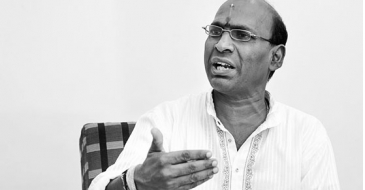
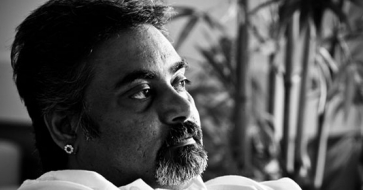
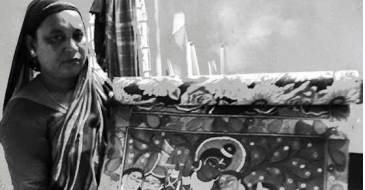
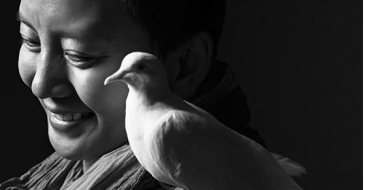
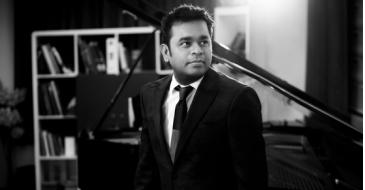
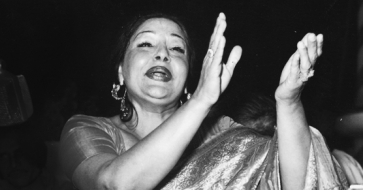
Usha Raj
October 11, 2017
Sivaramakrishnan,girija,Keerthu,sivaram
October 09, 2017
Sai Prasad
October 08, 2017
Shekar Dattatri
October 08, 2017
Ronu Majumdar
October 08, 2017